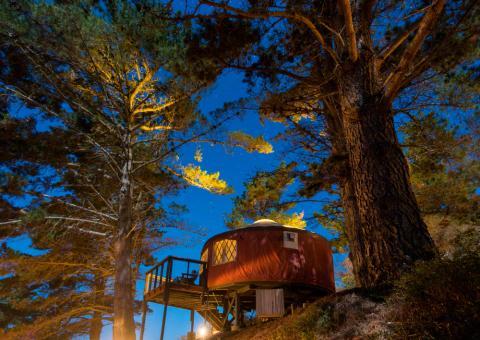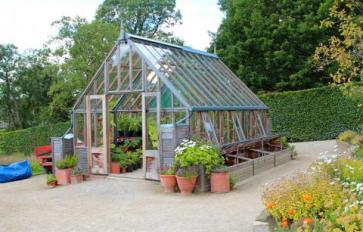
Welcome to the sustainable housing series with Basmati.com! Each week, I’ll write an article that talks about structures that promote sustainable living. I’ll cover everything from construction to average price. This week, I'll be exploring Yurts.
Week 2: Yurts
So, what is a Yurt? Yurts are round, intricate tent-like structures. They originally hail from the Central Asian region– dating back around 3,000 years! The word yurt is of Turkish origin, but has been adopted and adapted by several surrounding cultures as well. Traditionally, yurts were designed for use by nomadic cultures – their structures and outer-layers are lightweight and designed to be portable. Traditionally, the coverings of yurts were made from skins and felts.
Yurts carve out a place for themselves in the Sustainable Housing Series with Basmati mainly due to their ecofriendly structure and minimal impact to the surrounding environment. The ‘skeleton’ of the Yurt is made with wood woven into a lattice-like structure. Many yurts use bamboo as the wood by which to construct the skeleton of the yurt – bamboo is a highly renewable resource. Further, Minimal amounts of wood are needed for the skeleton of the yurt because of the efficiency with which lattice formation supports and distributes loads of weight. Modern-day Yurts use various types of efficient and insolated materials for the outer layers of the yurt. Construction materials and waste are significantly minimized. But, if fabric sides aren’t your style, you can have a prefabricated yurt made for you as well. These still provide a sustainable approach, as the prefabrication process is significantly less wasteful and time consuming than traditionally built wood houses. The roofs of yurts are also traditionally made out of wood with a hole in the middle of the roof. Traditionally, the whole in the middle of the roof is for fires or stoves used inside, but modern-day architecture (at least in the United States) has transformed this into a beautiful skylight.
Yurts, like Earthships, are passive solar structures, meaning solar energy is naturally distributed by the structure – though unlike with Earthships, you need solar panels to collect the thermal energy in a yurt. But, once you harness the heat, it doesn’t escape – insulation in yurts are very efficient, therefor drastically decreasing use of energy.
Most yurts are designed with the idea of living off-the-grid in mind, but you don’t have to be totally self-sufficient to live in a yurt (or reap the benefits). Catchwater sytems, like those I talked about in the Earthship article, can be installed in yurts and act in the same way. Plumbing can be installed in yurts, or a greywater system and compost toilet can be installed (or, a little of both!). Electricity can be hooked up or collected by solar panels.
Yurts can be built to conceivably any size, though most hover around 1,000 square feet – which is another way that yurts keep energy use down.
So, how much do yurts cost? Well, as with Earthships (or any housing unit, really) it depends on if you will be building it yourself, or having one built for you. You can purchase a yurt kit in which all the supplies are delivered and you (and your lucky friends and family) can put it together – some/most can be assembled in 1-3 days! Yurts that are assembled and delivered to your property are available, too.
Yurt kits can be anywhere from $5,000-$30,000, which is a similar price range for those you build yourself (though ones you build yourself can be done for as low as a few thousand dollars). Having a yurt delivered and assembled is the most expensive, with prices hovering around $30,000.
Yurts can also be customized with artwork and woodwork. Many people add glass windows, elaborate doors, and build decks around the yurt!
Do you live in a sustainable housing unit? Share your story!








